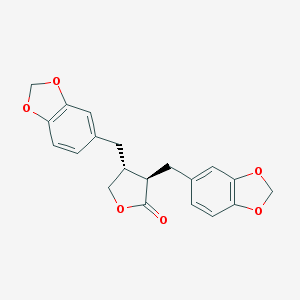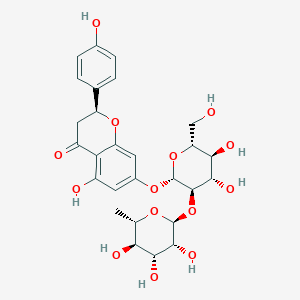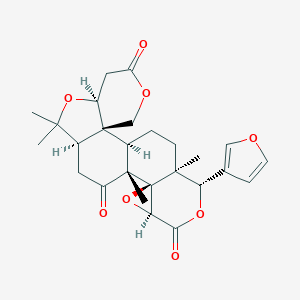Description
Hinokinin is a bioactive compound that can be found in certain plants, notably in the heartwood of trees belonging to the Cupressaceae family, such as the Brazilian cypress (Cupressus sempervirens). It’s a lignan compound that has garnered attention due to its potential therapeutic properties.
Applications:
- Pharmaceutical Research: Hinokinin has been studied for its potential anti-inflammatory, antinociceptive (pain-relieving), and antiparasitic properties. Its pharmacological effects are still being explored to determine its possible applications in the medical field.
- Traditional Medicine: In some cultures, plants containing hinokinin have been used traditionally for treating certain ailments, offering a natural remedy for inflammation and pain.
- Cosmetic Industry: Given its potential anti-inflammatory properties, hinokinin may find applications in skincare products targeted at reducing skin inflammation or redness.
Benefits:
- Anti-inflammatory Properties: Hinokinin has been reported to have anti-inflammatory effects. This makes it a potential candidate for developing treatments for inflammatory conditions.
- Pain Relief: Some studies have indicated that hinokinin possesses antinociceptive properties, which means it can help alleviate pain. This could have implications for developing new pain relief medications or supplements.
- Antiparasitic Effects: Hinokinin has shown antiparasitic activity against certain parasites, suggesting potential as an antiparasitic agent.
- Anticancer Potential: Preliminary studies have suggested that hinokinin might have anticancer activities. However, more research is needed to ascertain its true potential in this area.
- Safety Profile: Initial studies suggest that hinokinin has a favorable safety profile, but as with any compound, thorough testing is needed to ensure its safety for widespread use.
Manufacturing
Hinokinin is typically extracted from the bark or leaves of Ocotea plants. The extraction process involves several steps:
- Harvesting: The plant material, usually bark or leaves, is collected.
- Drying: The plant material is dried to reduce moisture content.
- Grinding: The dried plant material is ground into a powder to increase surface area.
- Solvent Extraction: The powder is mixed with a solvent (such as ethanol) to extract the hinokinin. This step may involve heating or ultrasonication to improve yield.
- Purification: The extract is purified to isolate hinokinin. This can involve techniques like chromatography.
- Crystallization or Concentration: Finally, hinokinin is either crystallized or concentrated into a more usable form.
Usage
Hinokinin has been studied for various medicinal purposes, though it’s important to note that its use is largely experimental and not widely recognized in mainstream medicine. Potential uses include:
- Anti-inflammatory Properties: It may help reduce inflammation in certain conditions.
- Antiparasitic Effects: Some studies suggest effectiveness against certain parasites.
- Anticancer Potential: Preliminary research indicates possible anticancer properties.
- Antiviral Activity: Hinokinin might have activity against certain viruses.
Daily Dosage
Determining an appropriate daily dosage of hinokinin is challenging due to the lack of extensive clinical studies. Dosage would likely vary based on factors like the individual’s health, the specific condition being treated, and the form of hinokinin used (e.g., extract, capsule, etc.). As with any supplement or medicinal compound, it’s crucial to consult with a healthcare provider before starting any treatment with hinokinin.
Safety and Regulatory Status
As of my last update in April 2023, hinokinin may not be widely regulated or studied in many regions. It’s important to approach its use with caution and under professional guidance, especially considering the lack of comprehensive safety and efficacy data. Potential interactions with other medications and side effects should also be a consideration.





